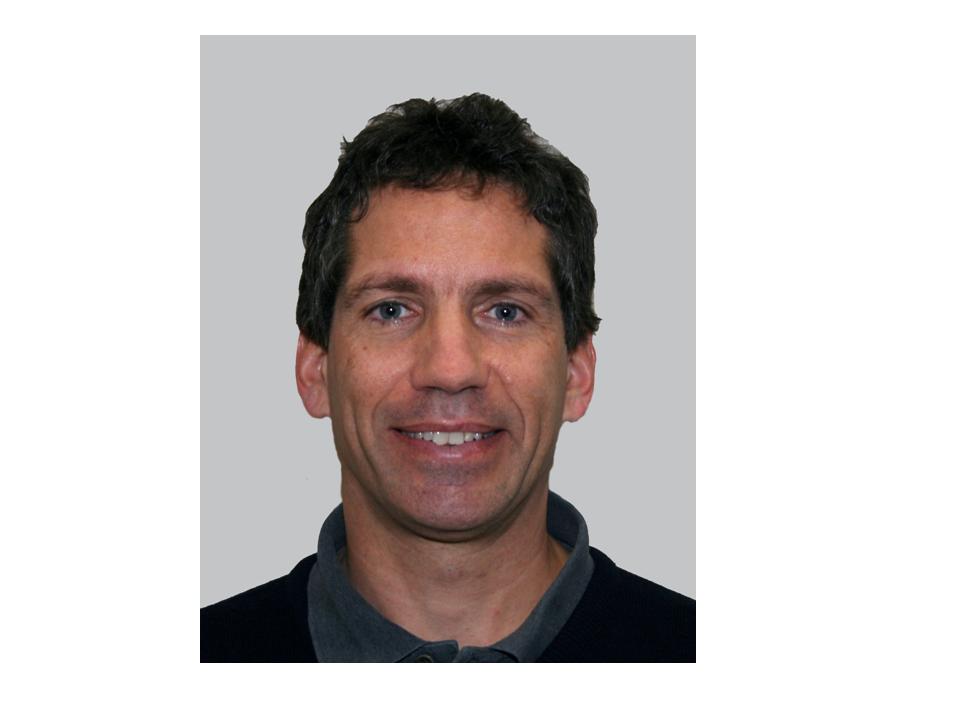
Laboratoire Interdisciplinaire sur l'Organisation Nanométrique et Supramoléculaire (LIONS)
DRF/IRAMIS/NIMBE
CEA/SACLAY, 91191-Gif-sur-Yvette Cedex, France
Tél. : +33 1 69 08 48 18Fax : +33 1 69 08 66 40
Email :
Fonction
Research scientist, directeur de recherche, expert international
Theoretician in condensed matter, in statistical mechanics of charged liquids
Research activities
Understanding the thermodynamical, equilibrium, structural and stability properties of aqueous solutions containing charged objects of various geometries and shapes (ions, organic or mineral oxide colloids, latex, proteins, DNA, semi-flexible polyelectrolytes, clays,…) from the correlations between particles at the nanometer level. Quantitatively explaining the experimental data in small angle scattering, reflectivity, osmotic pressure,…
More recently, analysis at the explicit level of description of the solvent (mainly water) molecules in bulk and around solute particles with classical force fields.
Liquid physics techniques: Integral equations, DFT, Monte Carlo and Molecular Dynamics simulations in various ensembles,…
1) Molecular Integral equations: solve Ornstein-Zernike (OZ) equation with approximate closure (mainly HNC which neglects the bridge function) for the pair correlation functions g(r,Ω) where r is the distance between the centers of mass (the oxygen atoms for H2O solvent) and Ω is the relative orientation between the two molecules (five Euler angles). The resolution benefits from the powerful use of projections g_mnl_μν(r) onto rotational invariants (generalysed spherical harmonics) which are characterized by five indices and depend on the separation r only. Very efficient homemade codes make it possible to solve the numerical problem in a few minutes for bulk water, bulk electrolytes, isolated solute of “simple” shape immersed in water…
2) Monte Carlo (MC) and Molecular Dynamics (MD) simulations: The trajectories of bulk systems (pure water, electrolytes…) are analysed in terms of projections g_mnl_μν(r). The simulation data available at short distances r only are then combined with the HNC closure valid at least at long distances and the OZ+Integral equation problem is solved. The overwhole picture enables first to clean the bare simulation data from the explicit+implicit finite-size corrections in a self-consistent manner and then to provide all exact pair correlations (total, direct, cavity, bridge) at all distances r and/or all scattering vectors q. A new original technique investigates Grand Canonical Monte Carlo simulations where the insertion/destruction of molecules is performed via a trial non-equilibrium MD trajectory trough the 4th dimension.
3) 3D Molecular DFT: A solute is immersed in a bulk solvent and one minimizes the solvent functional in order to reach the solvent profile (3D x,y,z vector + 3 Euler angles orientation) around the solute and the solvation free energy of the solute. For instance, the approximate functional involves only the pair direct correlation function of the bulk (provided by the previous techniques 1-2), which corresponds using the HNC approximation for the solute-solvent correlations at infinite dilution of the solute component. Again, the original use of projections for the angular dependence of the solvent profile makes it possible to solve the MDFT problem in a few minutes for any molecular or even macromolecular solute of any complex shape.
The near future (2020) consists to add approximate solute-solvent bridge function/functional in order to go beyond the HNC approximation. The following post-doctoral position deals with this subject.
2020 post-doctoral position
We are accepting applications for a post-doctoral position (1 year, renewable) shared between the Laboratory LIONS (https://iramis.cea.fr/nimbe/lions) and la Maison de la Simulation) (http://www.maisondelasimulation.fr) on the campus Paris-Saclay. The main location will be LIONS.
SHORT DESCRIPTION AND OBJECTIVES
The theoretical understanding of solvation properties of molecules / macromolecules / interfaces in the domains of biology, colloidal physics, electrochemistry, material sciences requires an explicit molecular solvent level of description with atom-atom classical force-fields. Beside the standard and time-consuming numerical simulation, we have developed recently a powerful liquid physics theory based on 3D classical density functional theory. Up to now, it is solved within the HNC approximation which neglects the so-called “bridge” correlation functions. The project consists in developing the theory beyond this standard approximation by constructing various bridge functionals or functions which extend simple spherical liquid approaches to molecular solvents and solutes governed by highly anisotropic interactions and correlations. The new theory will be implemented in the existing MDFT code and its results compared to molecular simulations performed in parallel.
REQUIREMENTS
Successful candidates must have a PhD in theoretical and/or computational chemistry or physics. Skills for both analytical developments and computer programming are required. A solid knowledge of the statistical mechanics of liquids is a plus. Good knowledge of English, both written and oral, is compulsory.
FUNDING
The position is funded by the Agence National de la Recherche Under the project « BRIDGE », gathering researchers at Paris-Saclay, Ecole Normale Supérieure de Paris, and Sorbonne Université. The salary depends on previous experience and it is fixed according with the CEA salary administration policy (starting from about 28000k€/year, net salary). The position gives access to the French Social Security system.
Contact
A preliminary contact by email with a CV is requested ( and ). Further details about the application procedure and about the project will be given in response.
List of Publications
Complete list:
A review on colloidal interactions:
Colloidal interactions
L. Belloni, J. Phys. : Cond. Matter 12, R549 (2000)
Some recent publications:
Thill, Antoine; Maillet, Perrine; Guiose, Beatrice; et al.
JOURNAL OF THE AMERICAN CHEMICAL SOCIETY Volume: 134 Issue: 8 Pages: 3780-3786 Published: FEB 29 2012
88. Bridge function for the dipolar fluid from simulation
JOURNAL OF CHEMICAL PHYSICS Volume: 136 Issue: 15 Article Number: 154503 Published: APR 21 2012
BDuval, Jerome F. L.; Bera, Sambhunath; Michot, Laurent J.; et al.
PHYSICAL REVIEW LETTERS Volume: 108 Issue: 20 Article Number: 206102 Published: MAY 15 2012
Thill, Antoine; Desert, Anthony; Fouilloux, Sarah; et al.
LANGMUIR Volume: 28 Issue: 31 Pages: 11575-11583 Published: AUG 7 2012
Thill, Antoine; Guiose, Beatrice; Bacia-Verloop, Maria; et al.
JOURNAL OF PHYSICAL CHEMISTRY C Volume: 116 Issue: 51 Pages: 26841-26849 Published: DEC 27 2012
92. Single-step formation of micron long (OH)(3)Al2O3Ge(OH) imogolite-like nanotubes
Amara, Mohamed-Salah; Paineau, Erwan; Bacia-Verloop, Maria; et al.
CHEMICAL COMMUNICATIONS Volume: 49 Issue: 96 Pages: 11284-11286 Published: 2013
MOLECULAR PHYSICS Volume: 112 Issue: 9-10 Pages: 1246-1256 Published: MAY 19 2014
Zemb, Thomas; Bauer, Caroline; Bauduin, Pierre; et al.
COLLOID AND POLYMER SCIENCE Volume: 293 Issue: 1 Pages: 1-22 Published: JAN 2015
95. Multipod-like silica/polystyrene clusters
Desert, Anthony; Morele, Jeremy; Taveau, Jean-Christophe; et al.
NANOSCALE Volume: 8 Issue: 10 Pages: 5454-5469 Published: 2016
96. Electrolytes at interfaces: accessing the first nanometers using X-ray standing waves
ben Jabrallah, Soumaya; Malloggi, Florent; Belloni, Luc; et al.
PHYSICAL CHEMISTRY CHEMICAL PHYSICS Volume: 19 Issue: 1 Pages: 167-174 Published: JAN 7 2017
Thill, A.; Picot, P.; Belloni, L.
APPLIED CLAY SCIENCE Volume: 141 Pages: 308-315 Published: JUN 2017
98. Efficient molecular density functional theory using generalized spherical harmonics expansions
By: Ding, Lu; Levesque, Maximilien; Borgis, Daniel; et al.
JOURNAL OF CHEMICAL PHYSICS Volume: 147 Issue: 9 Article Number: 094107 Published: SEP 7 2017
99. Exact molecular direct, cavity, and bridge functions in water system
JOURNAL OF CHEMICAL PHYSICS Volume: 147 Issue: 16 Article Number: 164121 Published: OCT 28 2017
100. Finite-size corrections in simulation of dipolar fluids
JOURNAL OF CHEMICAL PHYSICS Volume: 147 Issue: 22 Article Number: 224110 Published: DEC 14 2017
101. Screened Coulombic Orientational Correlations in Dilute Aqueous Electrolytes
Belloni, Luc; Borgis, Daniel; Levesque, Maximilien
JOURNAL OF PHYSICAL CHEMISTRY LETTERS Volume: 9 Issue: 8 Pages: 1985-1989 Published: APR 19 2018
102. What Does Second-Harmonic Scattering Measure in Diluted Electrolytes?
Borgis, Daniel; Belloni, Luc; Levesque, Maximilien
JOURNAL OF PHYSICAL CHEMISTRY LETTERS Volume: 9 Issue: 13 Pages: 3698-3702 Published: JUL 5 2018
103. Finite-size corrections in numerical simulation of liquid water
JOURNAL OF CHEMICAL PHYSICS Volume: 149 Issue: 9 Article Number: 094111 Published: SEP 7 2018
104. Non-equilibrium Hybrid Insertion/Extraction through the 4th Dimension in Grand-Canonical Simulation
Luc Belloni
Journal of Chemical Physics, 151, 021101 (2019)
105. Hydration free energies and solvation structures with molecular density functional theroy in the hypernetted chain approximation
S. Luukkonen, M. Levesque, L. Belloni and D. Borgis
Journal of Chemical Physics, 152, 064110 (2020)
106. Structure factor of EuCl3 aqueous solutions via coupled molecular dynamics simulations and integral equations
R. K. Ramamoorthy, M. levesque, L. Belloni and D. Carrière
J. Phys. Chem. B (2020) in press




